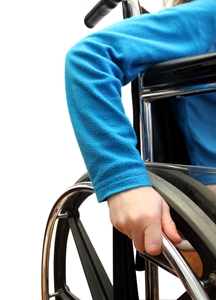Preparing students with disabilities for college |
|||
 Some students may be blind, hard of hearing or confined to a wheelchair. While these and other disabilities can make getting through high school and progressing to college difficult, it is not impossible. Many states have adopted the Common Core State Standards (CCSS) to ensure that their K-12 students are receiving the knowledge and skills they will need to succeed in college and the workforce. However, the parents of students with disabilities may wonder how the more rigorous CCSS will affect their children, as well as what other steps are being taken to make sure these individuals are prepared for the challenges of tomorrow. The CCSS for students with disabilities According to the National Dissemination Center for Children with Disabilities (NICHCY), Common Core-aligned instruction for students with disabilities must include several components, including support services and teachers who are trained to work with these individuals. For educators, providing instruction that is aligned with the CCSS to students with disabilities may be challenging at times, but they should know support is available to them. The NICHCY states that assistive technology devices and services are available too if they are needed. Learning how to help more students A recent post on the Department's blog focused on the "Conversation for Change," an online dialogue designed to spotlight the issues students with disabilities face as they transition from school to their careers. The dialogue, which ran from May 13-27, was set up like a "virtual town hall," and was open to the public. Overall, more than 2,000 individuals took part in the event. It is important for education officials to know what types of struggles students with disabilities face throughout their academic careers. This allows them an opportunity to create learning environments that are conducive to their long-term success. The higher the quality of instruction they receive, the better equipped these individuals will be to become valuable members of the nation's workforce, which is just what President Barack Obama wants to see. According to the Department's blog, Obama has asked the government to increase its number of employees with disabilities by 100,000 individuals. "We believe that all youth, including youth with disabilities, must graduate from high school with the knowledge and skills to be successful in the workforce," read the blog post. "While in school, students with disabilities must be held to high expectations, participate in the general curriculum, be exposed to rigorous coursework, and have meaningful and relevant transition goals and services aligned to college- and career-ready standards." College success The National Center for Education Statistics states that 11 percent of undergraduates reported having some type of disability during the 2003-2004 and 2007-2008 academic years. Everything from deafness and visual problems to speech and learning disabilities could not keep these students from taking their education to the next level. |

|
||
